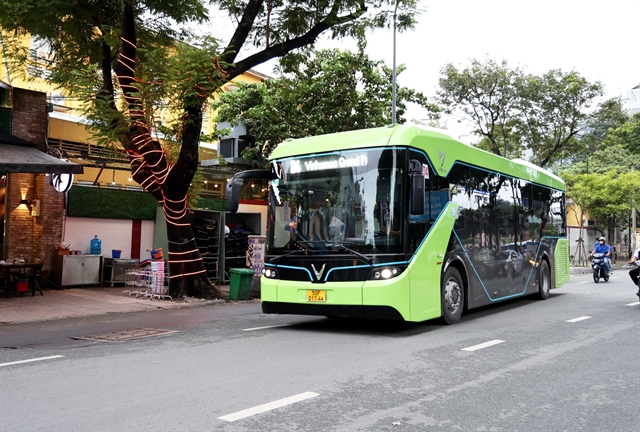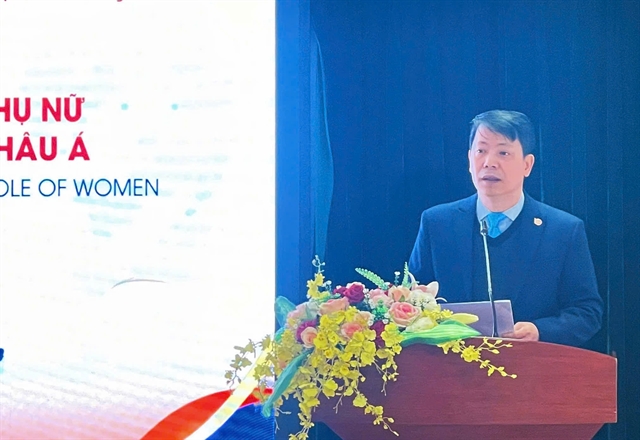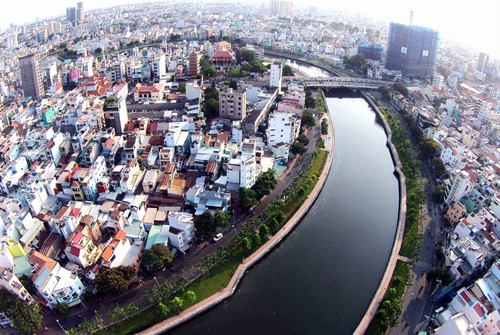 Environment
Environment

Experts have proposed using the Nhiêu Lộc – Thị Nghè Canal as a reservoir to regulate water as urban floods have become more serious during the rainy season in HCM City.
 |
| A view of Nhiêu Lộc-Thị Nghè Canal in HCM City. Experts have proposed using the Nhiêu Lộc–Thị Nghè Canal as a reservoir to regulate water, as urban floods have become more serious during the rainy season. — VNA/VNS Photo Mạnh Linh |
HCM CITY – Experts have proposed using the Nhiêu Lộc – Thị Nghè Canal as a reservoir to regulate water as urban floods have become more serious during the rainy season in HCM City.
Irrigation engineer Lê Thành Công, director of D&C Company, which offers a drainage water consultancy service, proposed the solution as an alternative to building several reservoirs in the city.
Under the proposal, at least 9.4 kilometres of the canal with the average width of 38 metres would be reserved for dealing with floods.
"HCM City has an advantage with its natural canal system, so it should be used to contain water. Building reservoirs is costly, " Công said.
Upon the proposal, the canal will be divided into four sections, allowing easier regulation of the water. The sections would be closed by a sluice gate system which is operated electrically.
Công suggested dredging the canal to 4.5 to 5 metres instead of 2.5 metres to contain more water.
The canal would have the capacity to include 1.4 million cu.m water, with enough space for rainfall of 150mm or more.
The project is scheduled to contain more than 1.4 million cubic metres of water, Công said, adding that his research group found that rainfall amounts varied in the city.
Sometimes, for example, there will be no rain at the beginning section of the canal, while the middle and the end sections have heavy rainfall.
While the area near Nhiêu Lộc – Thị Nghè Canal has heavy rain, the area near Tân Hóa - Lò Gốm Canal may not have rain.
Currently, District 7 has the largest rainfall amount in the city.
When there is a heavy rain in the basin of Nhiêu Lộc – Thị Nghè Canal and the basin of Tân Hóa - Lò Gốm Canal in District 6 has no rain, water should be sent to District 6 through an underground drainage system.
Công, who was quoted in Thanh Niên (Youth) newspaper, suggested building an underground drainage system to collect rain water to deal with 69 out of 79 flooding points due to rain in HCM City.
With the current tides of Sài Gòn River, HCM City is able to release water from its canal system twice a day. This advantage is not available in any other city in the country.
Building sluice gates, dredging canal and building an underground drainage system would require VNĐ300 billion, a much lower expense than other flood prevention plans proposed.
The proposal, however, has led to a debate.
Dr. Tô Văn Trường, an expert in water resources and environment, said that the proposal was not feasible because the water level in the Nhiêu Lộc – Thị Nghè Canal was lower than the canal’s mouth at low tide.
Therefore, if the canal is dredged deeper, it cannot be used to contain rain water.
The same situation happened when the city government dredged Tham Lương - Bến Cát, and Tàu Hủ - Bến Nghé Canals, Trường said.
Trường also expressed his concern that it was hard for rain water to run from the street to the canal since the urban sewage system was overloaded.
The current sewage system can only cope with rainfall of 80 mm.
Associate Professor and Doctor Hồ Long Phi, director of the Centre of Water Management and Climate Change under the Việt Nam National University in HCM City, said that water in the canal would be more polluted if it was dredged more deeply. — VNS




